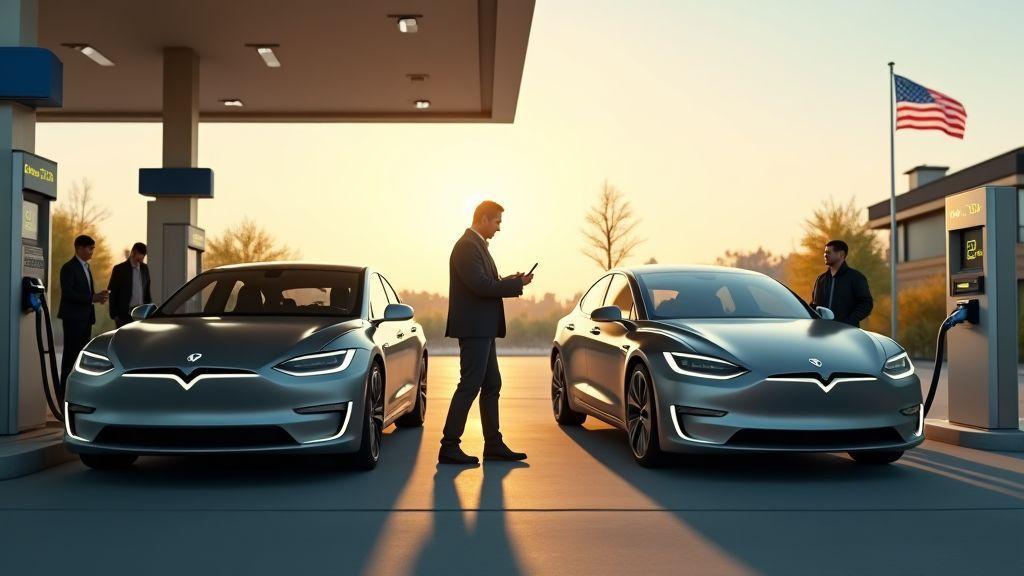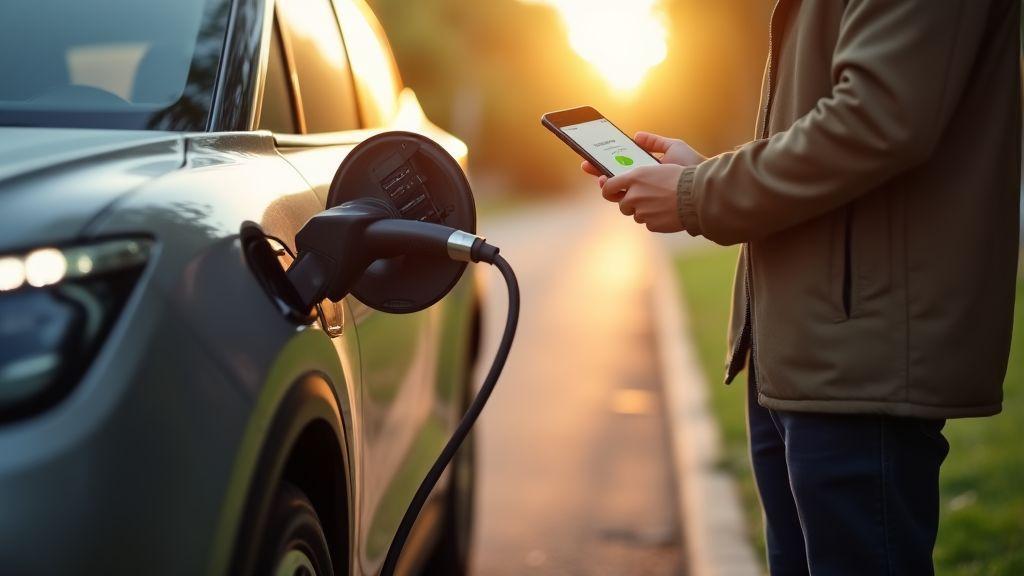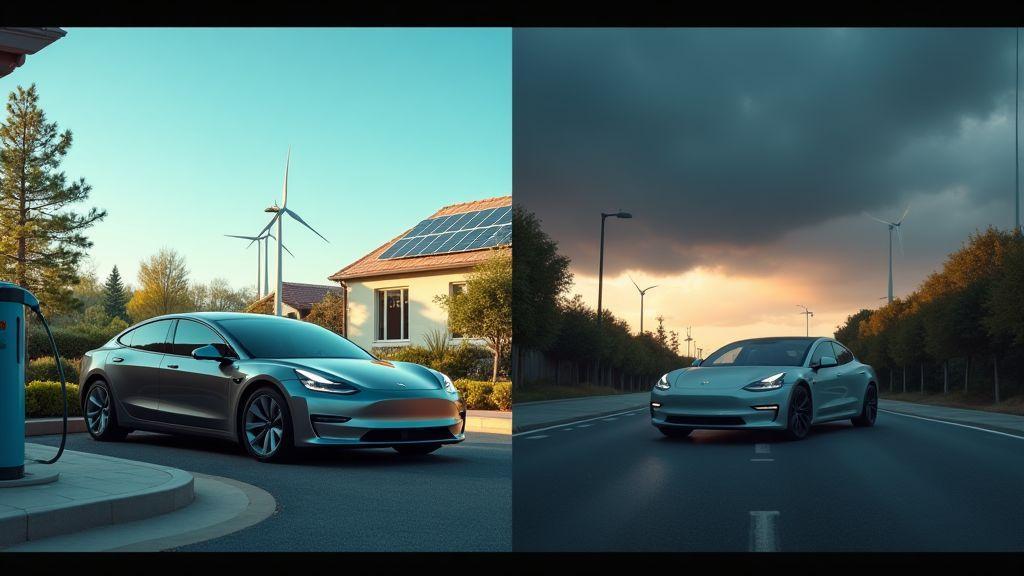Pros and Cons of Owning an Electric Vehicle in the USA
You will get a clear, practical guide to how costs, upfront price vs gas cars, and federal tax credits affect your budget. This article on the Pros and Cons of Owning an Electric Vehicle in the USA explains long-term fuel savings, real maintenance differences, and how battery health and warranty limits shape lifetime cost. You will learn how charging infrastructure affects your travel, where fast chargers are available, and how wait times and station reliability vary by state. Get smart tips to manage range anxiety, understand factors that lower range, and weigh incentives, resale value, and the cost of installing a home charger.
Key Takeaway — Pros and Cons of Owning an Electric Vehicle in the USA
- Your fuel and operating costs are usually lower than gas cars
- Charging access depends on where you live and travel
- You may get incentives and tax breaks to lower your purchase cost
- Driving range can limit long trips and requires planning
- Maintenance is simpler and often cheaper than gas vehicles

How Pros and Cons of Owning an Electric Vehicle in the USA affect your vehicle costs
You’ll feel the impact of pros and cons in two big buckets: what you pay up front and what you pay to run the car. Upfront, many EVs list higher sticker prices than comparable gas cars, but federal and state incentives can pull that price down. Over the life of the car, lower fuel and maintenance costs push total ownership toward savings for many drivers. For tools and government estimates on electricity per-mile and comparisons with gasoline, see Electric vehicle fuel cost and savings.
Think about where you live and how you drive. Electricity rates, local rebates, and access to chargers change the math a lot. An urban commuter with home charging will see different savings than a long-haul driver who relies on fast chargers. Also weigh depreciation, battery life, and resale demand—batteries lose capacity over years, and used EV markets are still finding balance. The right choice depends on your commute, parking situation, and how long you plan to keep the vehicle.
Upfront price vs gas cars and federal tax credits
EVs often cost more at the dealer, but tax credits can cut that gap. Federal credits and some state rebates can lower your net price by thousands. New rules and eligibility details change who qualifies, so check before you sign. Some credits require final assembly in North America or specific battery sourcing. Leasing can be an easy workaround because dealers sometimes pass the credit into the lease price. Also watch for local incentives — some states add rebates or HOV access that increase an EV’s value beyond the sticker.
Long-term fuel savings and electric car benefits and drawbacks
Electricity per mile usually costs less than gasoline per mile. Charging at home, especially overnight on a cheaper plan, gives the best savings. Public fast chargers can be pricier and vary by network, but depending on rates they often still beat gas per mile.
On the flip side, batteries degrade and replacement is expensive if needed outside warranty. Charging time and public access can be hurdles if you rent or park on the street. Still, you’ll likely see lower brake and engine maintenance costs, and regenerative braking extends brake life. Weigh these pros and cons against your driving pattern.
Electric vehicle cost savings vs gas cars (example)
If you drive 15,000 miles a year, an EV that gets about 3 miles per kWh at $0.15/kWh costs roughly $750/year in fuel. A gas car getting 25 mpg at $4.00/gal costs about $2,400/year. That’s a typical annual saving of about $1,650, though local electricity and gas prices and charging habits will change the result.
How EV charging infrastructure in the USA shapes your travel plans
You plan trips around more than distance now. Charging locations, plug types, and charger speeds decide where you stop and how long you stay. If you drive mostly in cities, you can top up overnight at home or work. For road trips, you map fast chargers like gas stations on a highway. That changes timing and route choices significantly. For an overview of charger types, connector standards, and planning basics, see the Department of Energy resource on Electric vehicle charging infrastructure overview.
Apps and real-time data are your travel companions—check station status, connector types, and prices before you leave. A broken charger or a long wait can add an hour or more to your day, so build buffer time into itineraries and pick routes with multiple charger options.
Costs and convenience shape behavior too. Fast charging costs more but saves time. If you rely on public chargers, membership plans, roaming fees, and pay-per-use pricing affect your budget. Your charging habits—home charging vs public fast charging—change how you plan errands, weekend trips, and long vacations.
Public charging networks, fast chargers, and availability
Major networks like Tesla Supercharger, Electrify America, ChargePoint, and EVgo cover much of the map, but coverage is uneven. In dense metro areas you’ll find many Level 2 chargers and a decent number of DC fast chargers. In rural areas, stations can be sparse, and you may need to detour off a highway to reach a fast charger. For official maps of designated highway charging corridors, check the Federal Highway Administration’s resources on Highway charging corridors and station map.
Fast chargers (DCFC) are crucial for long trips. They cut charge time from hours to 20–40 minutes for many EVs. Not every station delivers the same power—some chargers slow down when many cars use them at once or when the grid is strained. Check charger power (kW) and read recent user comments before relying on a stop.
Charging wait times and station reliability across states
Wait times vary by state and location. Coastal cities and busy travel corridors often have lines at peak times—expect 10–30 minutes waits even if your battery isn’t empty. In less busy regions, you may rarely meet another EV at a charger.
Reliability shifts by operator and maintenance practice. Some networks show high uptimes and quick repairs; others have more frequent offline units. Have backup stations on your route and use apps that report real-time status from drivers—sometimes a short detour saves a long delay.
EV charging infrastructure challenges
You’ll face gaps in rural coverage, inconsistent charger reliability, differing connector standards, and long permitting or installation delays. Planning is essential: pick routes with redundancy and allow time for the unexpected.

Managing range anxiety and daily driving as an EV owner
You’ll lose the gas station ritual quickly, but range worry can creep in. Track your daily miles for a week—you’ll see most days use far less than advertised range. That habit frees you to plan charging at home overnight or top up during errands. Treat range like your phone battery: plug in when you can and avoid letting it fall to single digits unless necessary.
Practical tips:
- Charge at home when possible; set a daily percent target (like 80%) for regular use.
- Use route planning apps to find trusted chargers and estimate real-world range.
- Drive a little slower on highways and use eco mode to stretch range on long days.
- Warm up the cabin while plugged in, use cruise control on steady roads, and reduce heavy cargo.
Over time the worry fades; you’ll trade will I make it? for how soon can I plug in?
Typical EV ranges and factors that lower range
- Small city models: advertised 120–180 miles; real-world ~90–150 miles
- Mid-size sedans: advertised 200–300 miles; real-world ~160–260 miles
- Long-range crossovers: advertised 300–400 miles; real-world ~240–360 miles
Big range reducers: cold weather, heavy loads, high speed, steep hills, and heavy HVAC use. Cold can cut range by 10–40% depending on conditions. Towing or roof racks add drag and weight, reducing miles.
Common electric vehicle ownership disadvantages United States drivers face
You’ll enjoy quiet starts and lower fuel bills, but you’ll also face downsides: uneven charging speed and availability, especially outside cities; limited overnight charging for renters or street parking; and different maintenance/repair experiences. EVs have fewer moving parts, but when electrical or software issues arise you may need specialized service. Resale and insurance costs vary by model and region.
Range anxiety is real but manageable: plan trips, set a charging routine, and build a buffer. Local owner groups and apps can point you to reliable chargers and cold-weather tips.
What you should know about EV maintenance and repair costs
When you weigh the Pros and Cons of Owning an Electric Vehicle in the USA, maintenance and repair are near the top. EVs skip many parts gas cars need: no oil changes, no spark plugs, no timing belts—often fewer shop visits and lower routine bills. Still, you’ll pay attention to tires, cabin filters, and software updates.
Costs vary by model, driving habits, and location. City drivers who use lots of fast charging may see faster battery wear than highway drivers. Collision repairs can be pricier because EV bodies and electrical systems sometimes require specialized technicians. Read the fine print on battery and high-voltage part warranties.
Think long term: lower routine service costs can be offset by a major repair or battery replacement if out of warranty. Use total cost of ownership when planning your budget.
| Typical annual maintenance (US average) | EV (estimate) | Gas car (estimate) |
|---|---|---|
| Routine service (fluids, filters, inspections) | $200–$400 | $300–$600 |
| Brake and tire wear | $150–$400 | $200–$500 |
| Occasional software/diagnostics | $0–$200 | $0–$100 |
| Major item (battery) | $5,000–$20,000 (rare) | $1,000–$5,000 (engine/transmission) |
Lower routine service needs and fewer moving parts
Fewer basic services: no oil changes and less transmission work. Regenerative braking saves brake-pad wear. Still, some parts need regular checks:
- Tire rotation and alignment
- Cabin air filter replacement
- Inspect battery coolant system and seals
- Brake fluid checks and occasional pad replacement
- Software updates and diagnostics
Battery health, replacement costs, and warranty limits
Batteries slowly lose capacity. How fast depends on temperature, charging habits, and model. Avoiding frequent very fast charges and extreme heat slows degradation. Replacement costs vary widely; older or out-of-warranty packs can cost several thousand to tens of thousands of dollars. Most new EVs in the U.S. come with battery warranties around 8 years or 100,000 miles—check definitions of capacity loss and coverage.

How incentives and resale value affect your EV purchase decision
Incentives and resale value can swing the decision fast. Incentives cut upfront cost or lower monthly payments. Resale value affects what you get back when you sell or trade in—strong demand and battery longevity keep values higher. If a model loses value quickly, you could still pay more over a short ownership period despite incentives.
Add up incentives, tax credits, fuel and charging savings, and expected resale price after your planned ownership period. That gives you the true cost per year, not just the sticker price.
Federal and state EV incentives USA and eligibility rules
The federal clean vehicle tax credit may lower your federal tax bill for qualifying new EVs—up to $7,500 for new vehicles and up to $4,000 for qualifying used EVs under current rules. Eligibility depends on vehicle assembly location, your income, the vehicle’s MSRP, and battery sourcing rules. Check IRS guidance for current details; see Federal clean vehicle tax credit details.
States and utilities offer point-of-sale rebates, tax credits, reduced registration fees, HOV lane access, and charger-installation rebates. Qualification can depend on income, residency, or vehicle specs. Check your state’s program pages and utility site for specifics.
Practical checklist:
- Check federal eligibility (vehicle assembly, MSRP cap, income limits).
- Check state rebates or tax credits and whether they apply at point-of-sale.
- Ask your utility about charger rebates and time-of-use rate discounts.
- Verify whether used EV tax credits apply if you plan a used purchase.
| Incentive type | Typical federal example | Typical state/local example |
|---|---|---|
| New vehicle tax credit | Up to $7,500 (income & assembly rules) | Point-of-sale rebates, $500–$7,000 (varies) |
| Used vehicle credit | Up to $4,000 (income & price caps) | Occasional rebates or reduced registration fees |
| Utility incentives | Charger rebates, special rates (varies) | Home charger rebates, lower EV charging rates |
Used electric vehicle resale value United States trends and factors
Used EV values have fluctuated. Early models lost value quickly as batteries aged; newer batteries and longer ranges have slowed declines. Brands with strong demand and good charging networks tend to hold value. If you buy used, battery health, remaining warranty, and range are key. Regional demand, fuel prices, and local incentives also influence resale.
Home EV charger installation considerations for your property
Start by looking at where your car parks most nights. If you park in a garage, you can mount a charger on a wall; for street or shared lots you may need a longer cable, outdoor-rated box, or HOA/building permission. Chargers and cables must stay dry and clear of foot traffic—plan routing and weatherproofing.
Next, check your electrical panel and circuit capacity. Many homes can run a Level 1 charger on a standard 120V outlet. A Level 2 charger needs a dedicated 240V circuit and may require a panel upgrade if breakers are full. Get a load calculation from an electrician before buying hardware.
Consider future needs: charging speed, smart features, app control, and whether you might add a second EV later. Solar panels, battery storage, or shared chargers are worth planning now.
If you need help finding a contractor or have questions about local requirements, reach out through our contact page to connect with local resources and guidance.
Level 1 versus Level 2 chargers and installation cost estimates
Level 1 chargers plug into a standard 120V outlet and add about 3–5 miles of range per hour. They’re cheap and often included with the car—fine for short commutes with overnight charging. Level 2 chargers use 240V and add roughly 20–60 miles/hour, depending on the vehicle. Hardware runs from a few hundred to over a thousand dollars; installation can be $300–$2,000 depending on wiring, trenching, or panel upgrades.
| Feature | Level 1 | Level 2 |
|---|---|---|
| Voltage | 120V | 240V |
| Typical charge rate | 3–5 miles/hour | 20–60 miles/hour |
| Hardware cost | $0–$400 (often included) | $300–$1,200 |
| Installation cost | $0–$200 | $300–$2,000 |
| Best for | Overnight top-ups, low mileage | Daily drivers, faster fills |
Permits, electrical upgrades, and safety best practices
You will likely need a permit for a permanent EV charger. Many jurisdictions require a permit and inspection for new 240V circuits—pulling a permit protects you and your home and keeps insurance valid. Use a dedicated circuit with the correct breaker and wire gauge. Ground-fault protection and a listed charging unit reduce fire and shock risk. Hire a licensed electrician for installation and testing.
In the U.S., the National Electrical Code guides safe installation but local amendments matter. Federal tax incentives and state rebates can lower net costs, and many utilities offer time-of-use rates that make overnight charging cheaper. Work with local pros so your installation meets code and qualifies for incentives.
Conclusion
The Pros and Cons of Owning an Electric Vehicle in the USA come down to trade-offs. EVs usually deliver lower operating costs and simpler maintenance, but often at higher upfront prices and with dependence on charging access. Incentives and tax credits can tilt the scale, so include them in your calculations.
Think about range, battery health, and warranty as the long game. A solid warranty and conservative charging habits buy peace of mind. Sparse chargers or frequent fast charging can raise real-world costs and stress. Make your home setup part of the math—Level 2 home charging changes everyday convenience and adds installation costs.
Bottom line: weigh total cost of ownership, resale value, and your driving pattern rather than staring at the sticker price. If your commute is predictable and you can plug in regularly, an EV will likely save you money and hassle. If you take frequent long road trips or lack reliable charging, plan carefully.
Want more practical guides and real-world tips? Visit the Meridian Pioneer home for additional resources. For information about our site policies, see our site privacy practices and our terms of use.

